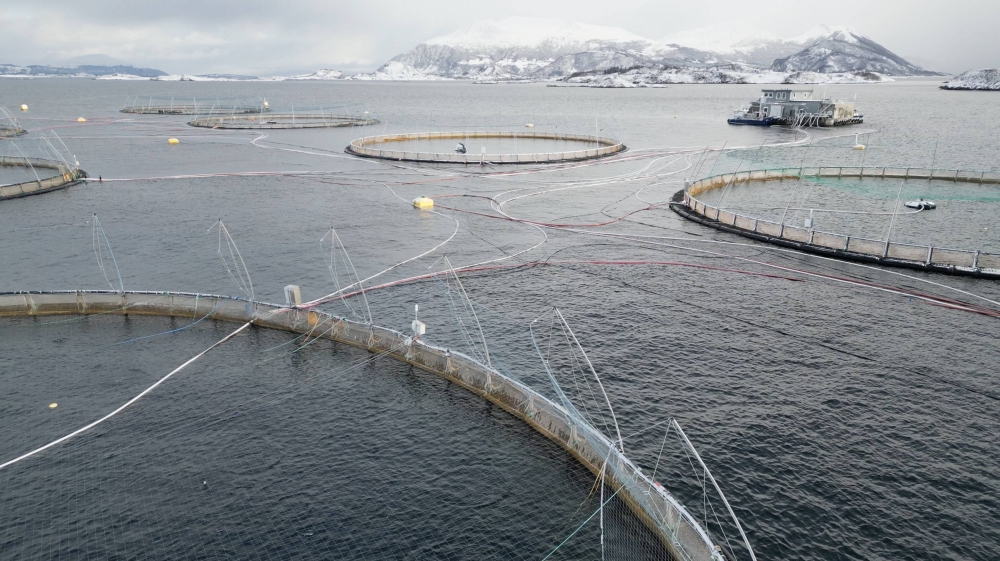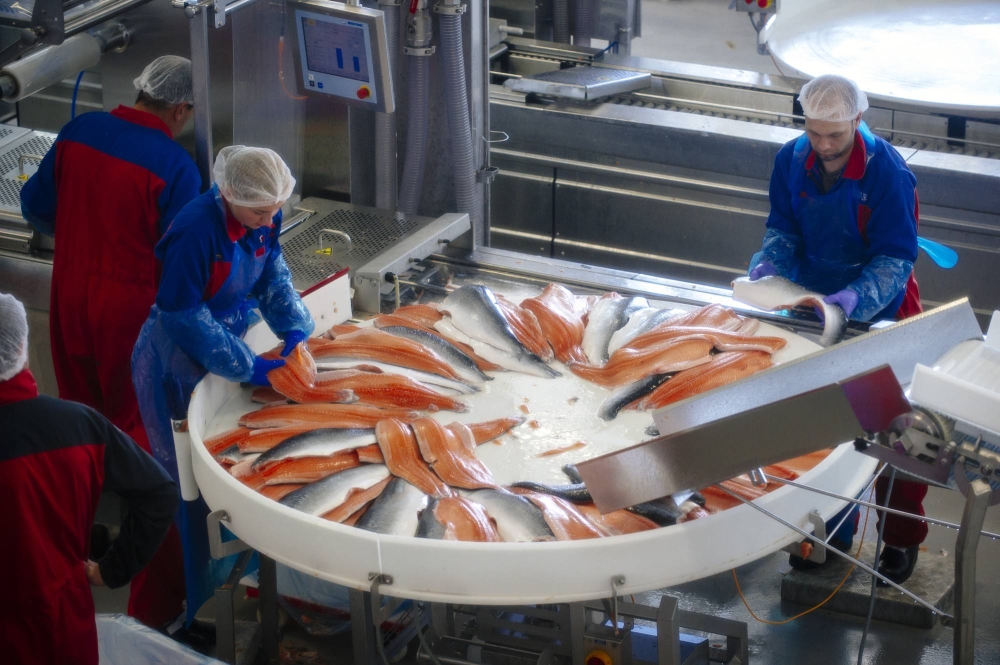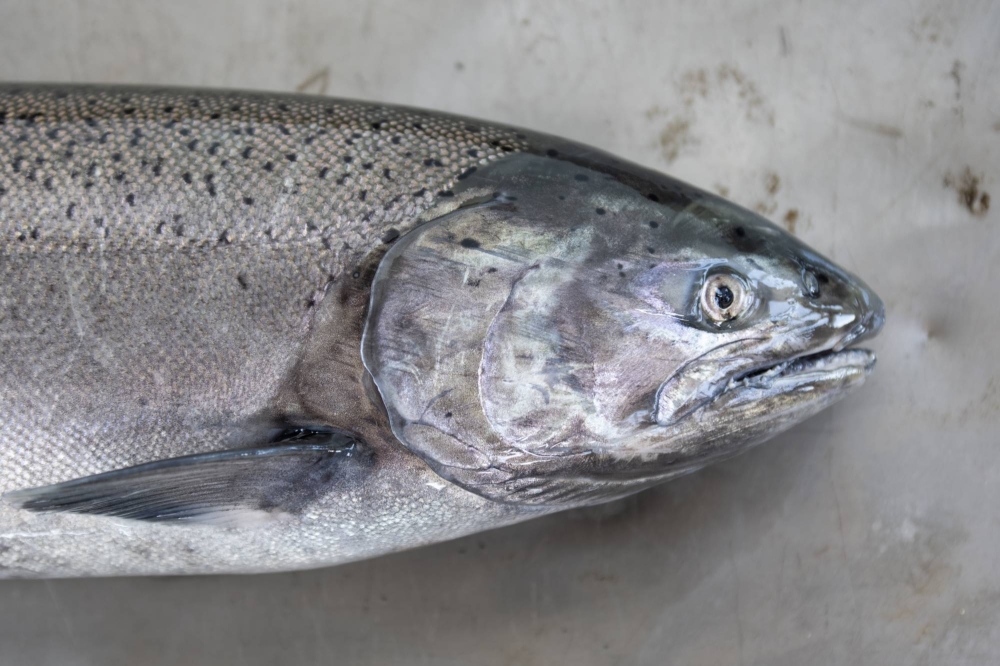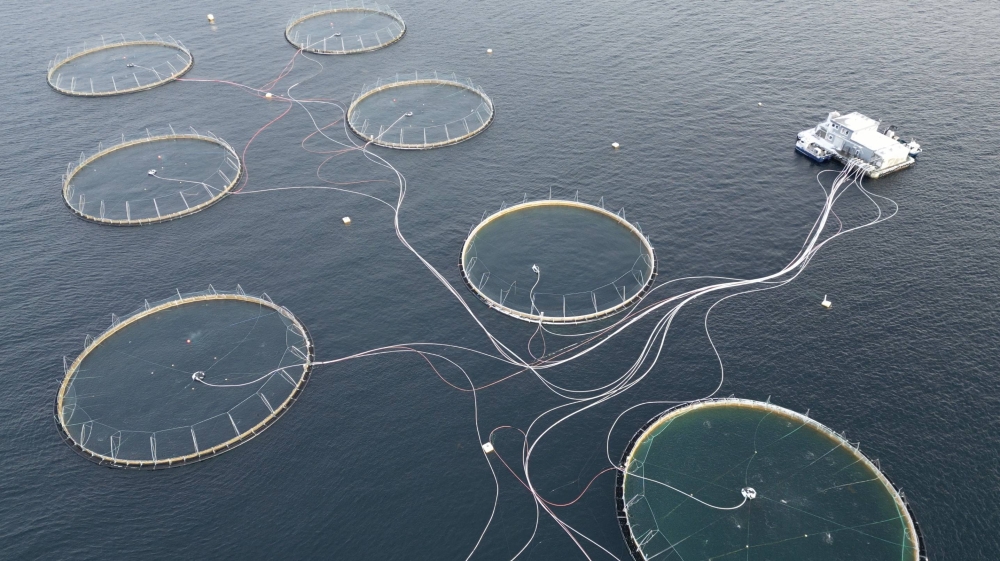Fermented herring, a Swedish delicacy, holds such a special place in the country’s culture that national newspapers review each year’s vintage and the first sale of the year receives hype akin to the first Beaujolais of the season. It’s also an acquired taste; social media videos abound of brave folks trying a food that smells like "eggs rotting in open sewage.”
But it’s becoming harder for dozens of small-scale fishers to produce it because Baltic herring is on the verge of extinction. The problem, they say, is that almost all the herring in the waters near the coast are being scooped up by industrial trawlers so they can be ground up and fed to another famous Scandinavian fish: Norwegian farmed salmon.
Norway produces more than half of the world’s farmed salmon. Last year, farms exported $17 billion of fish, and the government has pushed the industry to expand fivefold by 2050. The sector contributes around 3% of Norway’s GDP, according to industry estimates.
Yet that success has put herring at risk. The fish plays a central role in the Baltic Sea’s ecosystem and, with stocks down 90% since the 1960s, scientists are sounding an ever-louder alarm that the population could collapse. That would endanger biodiversity in a sea shared by nine European countries. The crisis has sparked a debate over the best way to save the dwindling herring stock.
The European Commission has proposed a full halt to herring fishing because of the concern from scientists, but the ban was vetoed last fall by Baltic states keen to safeguard jobs and other economic interests. Currently, quotas are assigned on a per-country basis, though vessels aren't bound by the limits put on the nations whose flags they carry, allowing them to capture large quantities of herring at a go.
Bjorn Lundgren, whose three-person company Rovogerns Surstromming makes some of Sweden’s most highly-rated fermented herring, has witnessed a precipitous drop in fish stocks. He used to catch enough for 5,000 cans a year; now he’s lucky to fill 1,000 cans.
"For me, the answer is simple,” he said. "Ban all herring fishing for fish not destined for the dinner plate.”
Lundgren is one of a number of small-scale fishers caught in this multibillion-dollar trade that’s also endangering the Baltic Sea ecosystem.
The sea’s area is a sixth of the Mediterranean, and its brackish, shallow waters house a delicate ecosystem. Herring and similar-looking sprat both play key roles as major food sources for birds, mammals and other fish. Several of the Baltic’s native species have unique adaptations and any disturbances can ripple throughout the ecosystem.
Agricultural runoff, toxic algal blooms and warming waters from climate change are all creating stress. The trawlers harvesting herring are another destabilizing force that threatens to completely upend the region’s ecology.
"There is no question that sprat and herring play crucial roles,” said Rainer Froese at the Helmholtz Center for Ocean Research in Kiel, Germany. He added that "there can be no doubt that the bulk of herring and sprat catches in the Baltic goes into fish meal and oil, and that Norway’s salmon aquaculture is one of the major end-users of those.”
The industrial trawlers sweeping the inland sea have played a major role in decimating herring stocks. Around 20 trawlers, most with home ports in Sweden and Denmark, account for 95% of all herring caught in Swedish territorial waters.
Figuring out exactly how much Baltic herring ends up as salmon feed is difficult, though. The path herring from the Baltic to Norway passes through a third country. Skagen, Denmark, is home to factories that process fish from around the world. The meal and oil they produce is traded on a global commodity market with significant traceability challenges.
One of the major processors, FF Skagen, says it supplies "some of the world’s largest producers of Atlantic salmon.” In an email, CEO Johannes Palsson emphasized the vessels it sources fish from adhere to government-set quotas.
The company wouldn’t divulge how much of its product goes to the Norwegian salmon industry. International trade data from the United Nations database Comtrade gives a rough indication for Danish exports on the whole. Norway is by far the biggest destination, importing roughly 300 million tons of products tagged with the tariff codes associated with the fish meal and oil. That represents almost 25% of total Denmark export volumes.
Research sponsored by the Swedish seafood industry and published in 2023 concluded Norwegian salmon farms can’t be held responsible for the collapse of herring stock due to the relatively small part the fish plays in salmon production.
"Even if the Norwegian salmon industry would completely stop using Baltic herring in its feed, it would just be shipped elsewhere,” said Sara Hornborg, a researcher at Swedish state-owned research institute RISE who authored the paper.
But it’s important to contextualize the seemingly small amount of Baltic fish caught with the Norwegian aquaculture industry’s immense demands, a spokesperson for the NGO BalticWaters said in a response to the RISE findings.
"In their world, feed from the Baltic is just a tiny proportion, but seen from the perspective of the Baltic, the amounts are extreme,” BalticWaters said.
While it might be hard to draw a scientifically conclusive correlation between herring stocks’ nosedive in the Baltic and Norwegian fish farming, demand has exploded over the past three decades.
"There is not nearly enough fish in the entire Baltic to feed the Norwegian salmon monster,” said Nils Hoglund, a fisheries policy officer at the NGO Coalition Clean Baltic, which in January filed a legal challenge over the EU herring quotas.
The Norwegian salmon industry has cut fish meal and oil to around 30% of feed, down from 90% in the 1990s. Further reductions have remained elusive, though, as farmed salmon still need omega-3 fats and acids mainly found in marine life.
Oyvind Haram, a spokesman for the Norwegian Seafood Federation, said the industry mainly uses fish scraps as well as fish that's too low-quality for human consumption. It’s also working to find alternative feed sources for farmed fish, including insects, larvae and algae. "We will, however, continue to use marine ingredients in coming years,” Haram said, "but it is a resource we need to manage responsibly.”
The relatively minuscule demand for Baltic herring for human consumption — in part due to government warnings about elevated levels of toxins — has forced the industry to sell its catches for feed, said Anton Paulrud, the head of the Swedish Pelagic Federation, an industry body.
Without the Norwegian salmon, he said, "we wouldn’t be able to sell our herring. Now we can actually make something out of this resource and turn it into food people want to eat.”
That’s left the ecosystem hanging on by a thread and impacted small-scale fisheries focused on people’s dinner plates.
Even major fermented herring producers are struggling. Oskars Surstromming, one of the country’s largest producers of the stinky delicacy, considered filing for bankruptcy in 2022 after only producing 10% of its usual output.
"There are very, very few bright spots looking ahead,” said Janne Soderstrom, who has been at the helm of the company for over 40 years. Since 2022, the company has produced around 20,000 cans of herring, down from a mid-2000s peak of 250,000, he added.
Significant policymaking failures have driven the Baltic fish stock decline, according to fishers, academics and activists. To help herring bounce back, they advocate for stopping large-scale trawling, though a complete stop to let stocks recover may ultimately be needed. In an effort to mitigate the declines of herring stocks, Finland’s government on Thursday banned trawling for five weeks starting May 25 — during the fish’s spawning period — saying that Sweden’s government was planning a similar measure.
"The picture is overwhelmingly clear when it comes to the situation for the Baltic herring,” said Henrik Svedang, associate professor in marine biology at Stockholm University. "The fish stocks are among the most depleted in all of Europe.”
He said the current situation mirrors other fisheries collapses, including the recent western Baltic and Kattegat cod crashes and the Atlanto-Scandian herring.
Quotas are lower, but the EU will still allow the catch of over 95,000 tons of herring. Meanwhile, the Norwegian salmon industry is thriving. Aquaculture is expected to grow by close to 40% by 2028, according to research company IMARC Group, and Norway’s government wants to export 5 million tons of farmed salmon and trout in 2050.
But one of the biggest challenges is that the mammoth industry vacuuming up large swathes of the world’s oceans may already be reaching the limit of what it can realistically source.
When asked about the potential connection between feed used for Norwegian aquaculture and Baltic herring, Haram pointed to the RISE report which failed to find that Baltic herring is used to feed Norwegian salmon to any significant degree. For Hoglund at Coalition Clean Baltic, though, the only thing left for the Baltic at this stage may be to serve as a cautionary tale.
"We’ve lost the cod, and not coming back to a good status anytime soon, and the same might be happening with the herring,” he said. "We might be left with only becoming a lesson for others.”


























With your current subscription plan you can comment on stories. However, before writing your first comment, please create a display name in the Profile section of your subscriber account page.